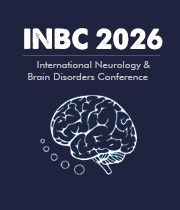Neuromuscular Agents
Neuromuscular agents are compounds that interact with the nerves and muscles to create a wide variety of effects. They are typically used in a variety of medical and research applications, including anesthesia, pain management, and muscle paralysis. Neuromuscular agents can be classified into three main types: depolarizing, nondepolarizing, and mixed action agents. Depolarizing agents work by making the membranes of muscle cells depolarize, or lose their electrical charge. This causes the muscle cells to contract, thus allowing the practitioner to achieve the desired effect. Succinylcholine is the most widely used depolarizing agent; it is used primarily as a muscle relaxant during short surgeries and for conditions such as tetanus. Nondepolarizing agents, on the other hand, block the muscle cells from being able to contract. These agents block the receptors that the neurotransmitter acetylcholine attaches to, preventing it from creating the appropriate depolarization. This allows the practitioner to achieve muscle paralysis for a longer period of time, and makes them ideal for longer-term anesthetics. Common nondepolarizing agents include pancuronium bromide and atracurium besylate. Mixed action agents are compounds that have both depolarizing and nondepolarizing effects. This allows for a smoother transition from one state to another, or from one stage of the procedure to another. These agents can also be used to maintain a level of muscle paralysis longer than can be achieved with the other agents. Examples of mixed-action agents include gallamine triethiodide and mepenzolate bromide. No matter the type of agent, all neuromuscular agents can have potentially dangerous side effects. These can range from minor to severe, and include changes in heart rate, blurred vision, chest pain, and even death in extreme cases. It is important to take all use of neuromuscular agents seriously, and follow the directions supplied with the particular agent.

Joe Sam Robinson
Mercer University, United States
Robert B Slocum
University of Kentucky HealthCare, United States
George Diaz
Memorial Healthcare Systems, United States
Daniel Curry
Texas Children’s Hospital, United States
Zhenhuan Liu
Guangzhou University Chinese Medicine, China
Kiran Ghotra
Lake Erie College of Osteopathic Medicine, United States




Title : Atypical presentation of Juvenile myoclonic epilepsy in a 16-year-old female: A Case Report
George Diaz, Memorial Healthcare Systems, United States
Title : What we don’t know about hydrocephalus and It’s management
Daniel Curry, Texas Children’s Hospital, United States
Title : Artificial intelligence-driven DWI and FLAIR for the detection of early stroke changes: A systematic review
Shari L Guerra, The Medical City, Philippines
Title : Mapping neuroplasticity in occupational therapy: Evidence-based interventions with measurable neural outcomes
Jessica Marchant, Texas Woman's University, United States
Title : Non-pharmacologic management of orthostatic hypotension in inpatient rehabilitation: A quality improvement initiative
Laura Steakin, Rehabilitation Institute at Sinai, United States
Title : Non-pharmacologic management of orthostatic hypotension in inpatient rehabilitation: A quality improvement initiative
Mackenzie Weber, Rehabilitation Institute at Sinai, United States